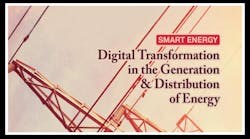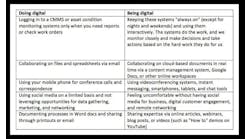It’s like five-dimensional chess.
That’s how Shuli Goodman describes the emerging approach to energy production and distribution. “It’s a complicated arena. It’s urgent,” says the executive director of LF Energy. “We have an almost completely vertical diffusion curve for accelerating the transition to distributed energy resources to realize decarbonization and mitigate the worst of the climate crisis. That requires an urgency and speed that the planet has never seen before.”
One great enabler of accelerated innovation, says Goodman, is an open-source, digital strategy. An
This article appears in the Energy Special Report from Wind River. Click this cover to get your copy.
approach that employs IoT technology to connect grid-infrastructure equipment, enabling utilities to collect data and better manage their systems. The benefits include speedier detection of outages, quicker restoration of power to customers during those outages, and the potential for a self-healing energy grid that employs some of the same principles of prescriptive maintenance we see in the industrial space.
It’s smart stuff. And it’s a drastic change from the way we’ve been doing energy for the past 150 years. “We would push electricity out and it would automagically (or automatically) appear when you flipped the switch,” Goodman describes. “But that system is extremely inefficient, considering that we lose approximately 60% of electrons in that process.”
That waste is the target of what she dreams of as radical energy efficiency. “Not just Energy Star appliances and insulation and those things, which are critical. But starting to be fundamentally more efficient in the ways we use electrons. By networking electrons using technology by orchestrating the metadata about electrons we can shape the grid in ways previously unimagined. That gives operators never-before-seen abilities to meet supply and demand in more precise ways.”
Looking back, looking ahead
A little background…introduced in 2018 and launched in 2019, LF Energy is a collective initiative that supports open-source innovation in the energy and electricity sectors. Its focus is accelerating energy transition and the decarbonization of the world’s economies.
No small feat.
This progressive approach entails the use of market signals to develop accurate demand insights as a critical aspect of the design of electrical power systems. “With a variable-energy approach we can focus on the demand and supply sides so that we can balance the market and shape the grid accordingly,” explains Goodman.
Key players in this game are utilities, which are often monopolies or a co-op owned by a community. As such, they are not as progressive as other industries. (They don’t have to be, frankly.) Stability has been essential when it comes to energy and meeting economic demands. “Utilities rely on propriety software, which when you think about it makes no sense,” says Goodman, who advocates for greater cooperation, enabled by open-source solutions, among communities and networks and grid operators. “With open-source technology there is plenty of room for high-value services.”
And that’s where high-value service providers like Wind River come into play. Here’s why: utilities have always worked with a small set of OEMs, such as GE, ABB, Schneider Electric. Those companies have been responsible for providing utilities with the hardware and software they use to service their customers. As utilities undergo digital transformation, they turn to new vendors to enable new approaches. Says Goodman, “Utilities will have to become technology companies, and in that context Wind River has a really important role in being able to abstract the complexity of hardware.”
As torrents of data move through systems, future facing utilities can build new systems to enable them to rethink their approach to supply and demand. “This is very exciting,” beams Goodman. “Wind River is taking a very forward role, which is why LF Energy is thrilled to have them as a member. If the energy system of the future is going to work, we’re going to need partners like Wind River.”
The energy transition
Similar to the larger digital transformation that is changing all industries, we’re also in the midst of an energy transition, in Goodman’s parlance, a paradigm shift in response to the climate crisis that is demanding rapid decarbonization. “We’re talking about making industries more efficient…using energy as efficiently as possible.”
Is this lofty goal possible? Yes. But is will require smart, concerted efforts with the right partners. We must design systems so that the explosion of data centers can manage this widely distributed energy resource, transforming traditional utilities into network operators that work with their customers and solution providers to optimize the distributed-energy approach.
“We must move from dominating natural systems to learning to design with natural systems,” summarizes Goodman. “It will be one of the greatest collective efforts in humankind.”

